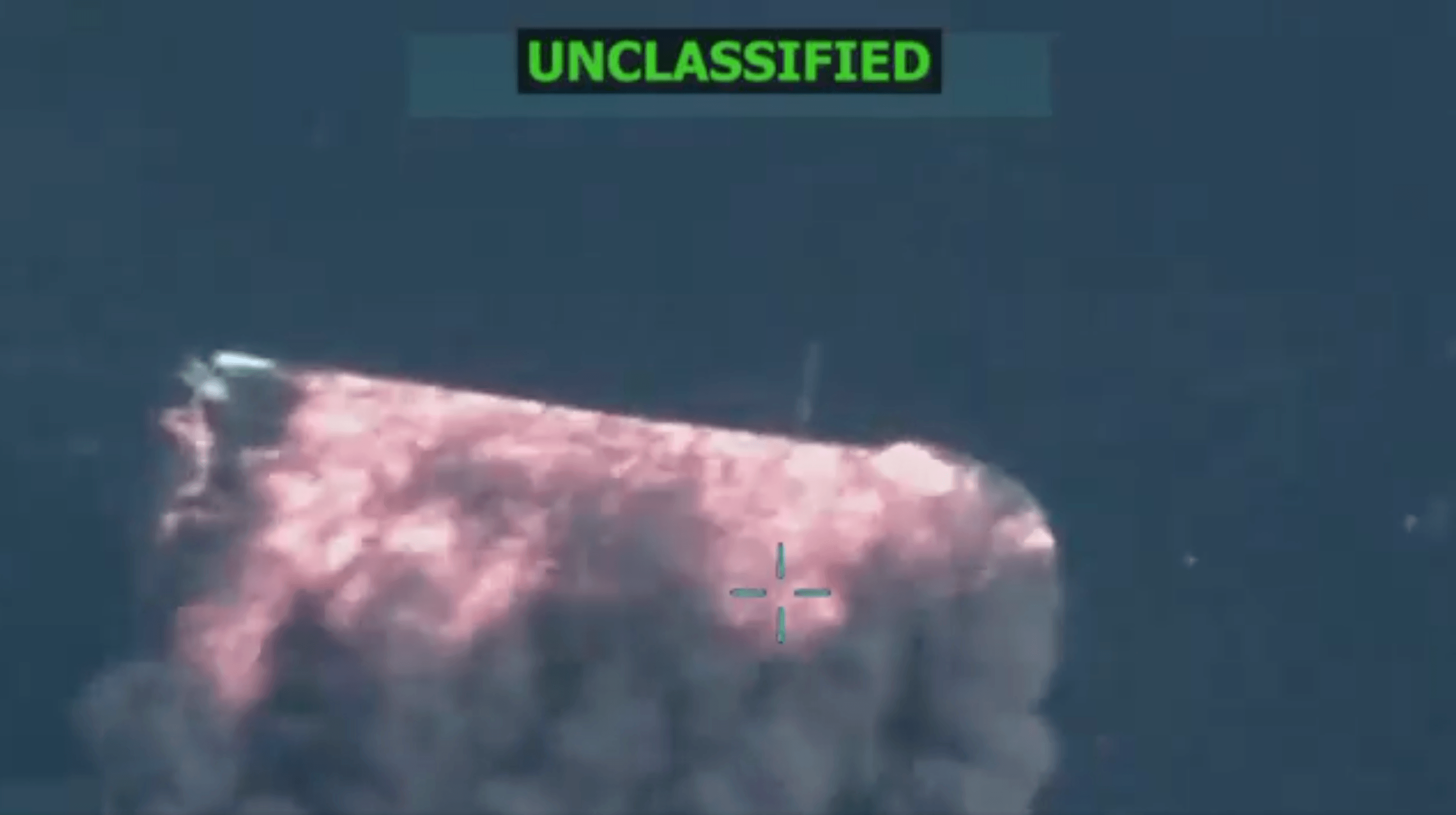How a U.N. Security Council Resolution Transforms a Non-Binding Agreement with Iran Into a Binding Obligation Under International Law (Without Any New Senatorial or Congressional Vote)
Published by The Lawfare Institute
in Cooperation With

It is now clear that any deal with Iran will by its terms be a non-binding agreement. That means the United States will have no international law obligation to comply with the agreement, considered in isolation, and that only diplomatic and political considerations – which might not be trivial – will stand in the way of the next President backing out of the deal and reimposing U.S. sanctions. This is why I concluded yesterday that “in comparison with a binding executive agreement under international law, a non-binding agreement with Iran is easier to make (because the President can clearly do it on his own) and easier to break (because there is no domestic or international legal obstacle to breaking it).”
However, in my post with Marty Lederman, I also noted that “an entirely different set of arguments and concerns might come into play if the parties were to sign a non-binding agreement that becomes the basis for a legally binding Security Council Resolution.” Recall that Iranian Foreign Minister Javad Zarif said the following in his statement about the Republicans’ letter: “if the current negotiation with P5+1 result [sic] in a Joint Comprehensive Plan of Action, it will not be a bilateral agreement between Iran and the US, but rather one that will be concluded with the participation of five other countries, including all permanent members of the Security Council, and will also be endorsed by a Security Council resolution.” The P5 are the Permanent Five members of the U.N. Security Council – i.e. the ones with the veto. (The “+1” is Germany.)
Any deal that all five accept would thus also be a deal that could receive U.N. Security Council approval to eliminate U.N. sanctions on Iran. Indeed, though not emphasized in the United States, this appears to be the plan. The negotiations are in large part over lifting current U.N. sanctions; that is why the P5 are involved. Thus there is every reason to think that “a nuclear agreement between Iran [and] the major powers would include the removal of all sanctions imposed by the UN Security Council,” as former Iranian nuclear negotiator Sirous Nasseri said yesterday in the Tehran Times. (By contrast, when asked about a Security Council resolution endorsement of the nonbinding agreement, State Department spokesperson Jen Psaki said on Tuesday: “I’m just not going to get ahead of how this would be implemented at this point in time.”)
It is impossible to know what the ultimate legal effect of such a Security Council resolution would be without knowing the precise terms of the resolution. But in general, a Security Council resolution, especially a decision under Chapter VII, can generate significant international legal obligations. “The Members of the United Nations agree to accept and carry out the decisions of the Security Council in accordance with the present Charter,” states Article 25 of the Charter. In addition, Article 39, the first Article of Chapter VII, states: “The Security Council shall determine the existence of any threat to the peace, breach of the peace, or act of aggression and shall make recommendations, or decide what measures shall be taken in accordance with Articles 41 and 42, to maintain or restore international peace and security.”
Since the U.N. sanctions against Iran began, they have been authorized under Article 41 (which concerns “measures not involving the use of armed force” that “give effect” to UNSC “decisions”), and they have involved mandatory obligations. For example, one of the earliest resolutions, UNSCR 1737, decides that
all States shall take the necessary measures to prevent the supply, sale or transfer directly or indirectly from their territories, or by their nationals or using their flag vessels or aircraft to, or for the use in or benefit of, Iran, and whether or not originating in their territories, of all items, materials, equipment, goods and technology which could contribute to Iran’s enrichment-related, reprocessing or heavy water-related activities, or to the development of nuclear weapon delivery systems.
Though one can debate the full effect of this provision, it uses the language of obligation and has significant force under international law.
The Obama administration used this basic mechanism – political agreement followed by binding U.N. Security Council Resolution – in September 2013 in connection with Syrian Chemical weapons. It is thus easy to imagine the following events with an Iran deal. The Obama administration (as part of the P5+1) negotiates a non-binding agreement in which Iran agrees to curb its nuclear weapons development program for a specified period of time in exchange for the lifting of U.N. sanctions (and probably in exchange for the lifting of U.S. sanctions that exceed what the U.N. requires). The U.N. Security Council then blesses the non-binding agreement in the form of a resolution under Article 41 that not only lifts U.N. sanctions, but also obligates the nations of the world to not impose certain sanctions on Iran as long as it complies with the deal. At that point, depending on the language of the resolution, the United States could have an international legal obligation not to impose sanctions on a compliant Iran.
Importantly, such an international legal obligation can persist far beyond President Obama’s term. In other words, by using the Security Council to “legalize” an otherwise non-binding agreement with Iran, President Obama could skirt Congress altogether (by claiming that his deal with Iran was simply non-binding, thus requiring no first-branch participation), and then (via the Security Council) create an international legal obligation that would bind the nation (and thus the next President) to the terms of the non-binding deal under international law. Depending on the language of the resolution, President Obama’s successor might be able to fulfill this international legal obligation only by exercising presidential discretion to waive the sanctions. In other words, a Security Council resolution could mean that the next President can reimpose congressional sanctions only by violating international law.
There are obviously many uncertainties here. I have no idea what the language of a Security Council resolution will be. The Obama team might feel constrained to negotiate a resolution that does not create international obligations that unduly clash with congressional sanctions, and some will argue that the President lacks the authority on his own to create international obligations contrary to U.S. statutes (compare this case).
However, given the extensive waivers Congress gave the President in the sanctions statutes, it is hard to see how any Security Council resolution would conflict with the statutes; the resolution would at most compel the President under international law to invoke the waivers. A future president might disregard the international obligation imposed by the Security Council, through interpretation or legal argumentation. Nonetheless, the key point is that a Security Council resolution can significantly raise the political and diplomatic costs of an otherwise non-binding deal with Iran. Through this mechanism, the President can avoid submitting any deal to Congress or the Senate and yet still obligate the United States under international law to comply with the Iran deal. (To repeat: I have no idea if this is the administration’s plan. I am speculating based on what Javad said, on the arrangement of negotiating partners in the P5+1, and on the President’s clear desire to avoid Congress now but make his plan stick beyond 2016.) Senator Cotton said that the Senate “must approve any deal President Obama negotiates with Iran by a two-thirds majority vote,” and that “[a]nything less will not be considered a binding agreement when President Obama's term expires in two years.”
I have outlined a way that the President could transform the non-binding obligations of the deal with Iran into binding obligations under international law without new Senate or congressional participation. I say “new” because, of course, the Senate gave its consent to the U.N. Charter seventy years ago. And yet if the President uses the United Nations to impose an international legal obligation that effectively limits congressional sanctions and handcuffs the next President, he will likely invite a political reaction from many Republicans that will make the letter from the 47 Senators seem mild. For that reason alone, the possibility I have outlined might not be in the interest of a President seeking to extend the Iran deal beyond his term. And yet it would not surprise me if this has been the plan all along.





